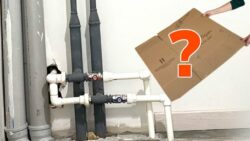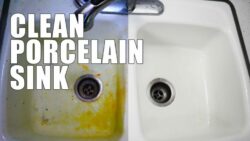In order to ensure the optimal functioning of your sump pump system, it is crucial to regularly clean out your sump pit. A sump pit, which is typically found in basements, plays a vital role in collecting water and preventing flooding. However, over time, debris and sediment can accumulate in the pit, hindering the pump’s efficiency and potentially causing damage. In this article, you will discover a comprehensive guide on cleaning out a sump pit, providing you with the knowledge and tools necessary to maintain the reliability and effectiveness of your sump pump system.
Why Sump Pit Cleaning is Important
Cleaning a sump pit is a crucial maintenance task that should not be overlooked. Regular cleaning and maintenance of the sump pit offer several benefits, including preventing clogging and blockages, maintaining optimal pump efficiency, and preventing unpleasant odors.
Prevents clogging and blockages
A sump pit collects water from the basement or crawl space and is designed to prevent flooding by pumping the accumulated water away from the building. However, over time, debris such as leaves, dirt, and small particles can accumulate in the pit, leading to clogging and blockages. This can hinder the proper functioning of the pit and the pump, potentially causing water backup and flooding. Regular cleaning ensures that the pit remains clear of any obstructions, allowing it to efficiently collect and pump water when needed.
Maintains optimal pump efficiency
The efficiency of the sump pump is directly impacted by the cleanliness of the sump pit. When the pit is filled with debris, the pump has to work harder to remove water, leading to increased energy consumption and potential wear on the pump. By regularly cleaning the sump pit, you can ensure that the pump operates at its optimal efficiency, reducing energy costs and extending the life of the pump.
Prevents unpleasant odors
When debris accumulates in a sump pit, it can start to decompose, releasing foul odors into the surrounding area. These odors can be unpleasant and may permeate throughout the basement or crawl space, making the environment uncomfortable to be in. Cleaning the sump pit regularly helps eliminate this issue, ensuring a fresh and odor-free space.
When to Clean a Sump Pit
Cleaning the sump pit should be done on a regular basis, but there are also specific signs to look for that indicate the need for immediate cleaning. Here are some indicators that it’s time to clean your sump pit:
Visible debris accumulation
If you notice that the sump pit has visible debris or sediment accumulation, it’s a clear sign that cleaning is required. Debris can include leaves, mud, and other particles that have been washed into the pit. Accumulated debris can interfere with the pump’s operation and prevent proper water drainage.
Foul smell coming from the pit
If an unpleasant odor is emanating from the sump pit, it is a surefire sign that cleaning is necessary. The odor is often caused by decaying debris, mold, mildew, or stagnant water in the pit. Regular cleaning will help eliminate these odors and ensure a fresh and clean environment.
Decreased pump performance
If you notice that the sump pump is not functioning as efficiently as it should, it may be an indication of a clogged or dirty sump pit. Reduced pump performance can lead to inadequate water removal and potential flooding. Cleaning the sump pit will help restore the pump’s performance and prevent any water-related issues.
Regular maintenance schedule
To be proactive in preventing any problems with your sump pit, it is recommended to include regular cleaning as part of your maintenance schedule. By adhering to a predetermined cleaning routine, you can prevent any potential issues from arising and ensure the smooth operation of your sump pump.
Essential Tools and Materials
Before you start cleaning your sump pit, it’s important to gather the necessary tools and materials. Here are the essential items you’ll need:
Rubber gloves
Rubber gloves are essential for protecting your hands from coming into direct contact with any potentially harmful debris or stagnant water in the sump pit. They provide a barrier against bacteria, mold, or other contaminants present in the pit.
Protective eyewear
Protective eyewear, such as safety glasses or goggles, should be worn to shield your eyes from splashes or small debris that may be dislodged during the cleaning process. This will prevent any eye injuries and ensure your safety while working.
Coveralls or old clothing
When cleaning a sump pit, it’s important to wear coveralls or old clothing that you don’t mind getting dirty. This will protect your regular clothing from any dirt or stains and make the cleaning process more comfortable.
Buckets or containers
You will need buckets or containers to collect and dispose of the debris and water extracted from the sump pit. Ensure that these containers are sturdy and can hold the weight and volume of the collected materials.
Sump pit cleaning tool
Choose a suitable sump pit cleaning tool based on your preference and the nature of the debris in your pit. Common options include a shovel, scoop, or a wet/dry vacuum. Select a tool that allows you to easily remove debris from the pit without causing damage.
Safety Precautions
Cleaning a sump pit involves working with water, debris, and potentially hazardous substances. To ensure your safety during the process, it’s important to follow these safety precautions:
Turn off the sump pump
Before starting the cleaning process, ensure that the sump pump is turned off to prevent any accidents or injuries. This will also prevent the pump from getting damaged during the cleaning process.
Disconnect the power supply
To avoid any electrical mishaps, disconnect the power supply to the sump pump. This step will eliminate the risk of electric shock and allow you to work safely without any power-related concerns.
Ensure proper ventilation
When working in an enclosed space like a basement or crawl space, it’s important to ensure proper ventilation. Open any windows or doors to allow fresh air to circulate, preventing the buildup of fumes or stagnant odors.
Use caution when handling debris
Handle any debris found in the sump pit with caution. Some debris may be sharp or carry hazardous substances. Avoid direct contact with your skin and dispose of the debris properly to avoid any injuries or contamination.
Use appropriate personal protective equipment (PPE)
As mentioned earlier, wearing rubber gloves and protective eyewear is crucial for personal protection. Ensure that you are adequately protected before starting the cleaning process.
Step-by-Step Guide to Clean a Sump Pit
Cleaning a sump pit requires a systematic approach to ensure a thorough and effective cleaning process. Follow these step-by-step instructions to clean your sump pit:
Preparing the work area
Start by preparing the work area. Lay down plastic sheets or tarps to protect the surrounding area from any splashes or debris during the cleaning process. Ensure that you have easy access to the sump pit and all the necessary tools and materials.
Removing the sump pump
Carefully remove the sump pump from the pit by disconnecting any hoses or pipes connected to it. Set the pump aside in a safe and clean location where it won’t get damaged during the cleaning process.
Extracting excess water
Using buckets or containers, remove any excess water from the sump pit. Start by scooping out the water manually or use a wet/dry vacuum for faster extraction. Be thorough in the water removal process to ensure a clean environment.
Scraping off dirt and sediment
After removing the excess water, use a shovel, scoop, or any suitable cleaning tool to scrape off any dirt, sediment, or debris from the interior of the sump pit. Be thorough in your cleaning and make sure to remove all visible debris.
Disposing of the debris
Collect the scraped-off debris into a sturdy bag or container to ensure proper disposal. Seal the bag tightly to prevent any contamination. Dispose of the debris in accordance with local regulations or guidelines.
Cleaning the sump pump
While the sump pump is removed from the pit, take the opportunity to clean it as well. Use a damp cloth or sponge to wipe away any dirt or residue on the pump. Pay close attention to the impeller and other critical components to ensure their proper functioning.
Reassembling and testing
Once the sump pit and sump pump are clean, securely reassemble all the components. Reconnect any hoses or pipes that were disconnected during the cleaning process. Once everything is properly reassembled, test the system to ensure that the sump pump is functioning optimally.
Preventing Future Build-Up
To prevent future build-up and the need for frequent sump pit cleaning, there are several proactive measures you can take:
Regular inspections and maintenance
Perform regular inspections of your sump pit to monitor any signs of debris accumulation or pump performance issues. Address any concerns promptly to prevent larger problems from occurring.
Installing a sump pit cover or lid
Consider installing a cover or lid on your sump pit to prevent debris from entering and accumulating in the pit. This will also help to reduce the risk of accidents or injuries by covering the exposed pit.
Using a debris screen or filter
Place a debris screen or filter over the opening of the sump pit to catch any larger debris before it enters the pit. This will help reduce the amount of cleaning required and prolong the life of your sump pump.
Avoiding dumping large waste into the pit
To prevent unnecessary strain on the sump pump and the need for frequent cleaning, avoid dumping large waste items into the sump pit. Dispose of larger waste properly to minimize debris accumulation.
Maintaining proper grading and drainage
Regularly inspect and maintain the grading and drainage around your property to ensure that water flows away from the foundation and into the sump pit as intended. Proper drainage will minimize the amount of water entering the pit, reducing the risk of clogs and blockages.
Benefits of Professional Sump Pit Cleaning
While you can clean your sump pit yourself, there are significant benefits to hiring professionals for this task:
Expertise and experience
Professional sump pit cleaners have the knowledge, skills, and experience to thoroughly clean your sump pit. They are familiar with the nuances of different systems and can identify and address any underlying issues that may affect your sump pit’s performance.
Efficient and thorough cleaning
Professional cleaners have specialized equipment and techniques that allow them to clean sump pits more efficiently and thoroughly. They have the necessary tools to remove debris from hard-to-reach areas and ensure that your sump pit is cleaned to the highest standards.
Identification of potential issues
During the cleaning process, professionals can identify any potential issues or damage to your sump pit or pump. They can provide recommendations for repairs or replacements, helping you avoid costly repairs or emergencies in the future.
Safety assurance
Professional cleaners adhere to strict safety protocols and have the appropriate personal protective equipment to ensure their safety and the safety of your property. By hiring professionals, you can have peace of mind knowing that the cleaning is being done safely and effectively.
Time and energy-saving
Cleaning a sump pit can be a time-consuming and physically demanding task. By hiring professionals, you can save valuable time and energy that can be better spent on other priorities. Professionals will efficiently clean your sump pit, allowing you to focus on more important matters.
Common Mistakes to Avoid
To ensure the effectiveness and safety of sump pit cleaning, it’s important to avoid these common mistakes:
Neglecting regular cleaning and maintenance
Neglecting regular cleaning and maintenance of your sump pit can lead to numerous problems, including clogs, pump failure, and unpleasant odors. Make sump pit cleaning a part of your routine maintenance to prevent these issues from occurring.
Using improper cleaning tools or chemicals
Using the wrong cleaning tools or chemicals can damage your sump pit or pump. Avoid using harsh chemicals or abrasive tools that can cause corrosion or other damage. Stick to appropriate cleaning tools and gentle cleaning solutions to ensure the longevity and proper functioning of your equipment.
Not wearing protective gear
Protective gear, such as rubber gloves and eyewear, should always be worn when cleaning a sump pit. Failing to do so can expose you to harmful bacteria, mold, or other contaminants present in the pit. Protect yourself by wearing the appropriate personal protective equipment.
Disposing of debris improperly
Disposing of the debris from the sump pit improperly can have environmental consequences and potentially violate local regulations. Follow local guidelines for proper disposal of debris to ensure compliance and minimize any negative impact on the environment.
Ignoring professional assistance when necessary
If you encounter any complex issues or are unsure about the proper cleaning and maintenance of your sump pit, it’s important to seek professional assistance. Ignoring professional help when necessary can lead to costly repairs and potential system failures.
Conclusion
Regular cleaning of your sump pit is vital for preventing clogging, maintaining optimal pump efficiency, and eliminating odors. By following a proper cleaning routine and taking the necessary precautions, you can ensure the smooth operation of your sump pump and prevent any potential issues. Whether you choose to clean the sump pit yourself or hire professionals, prioritizing sump pit cleaning as part of your maintenance routine will save you time, money, and potential headaches in the long run.





